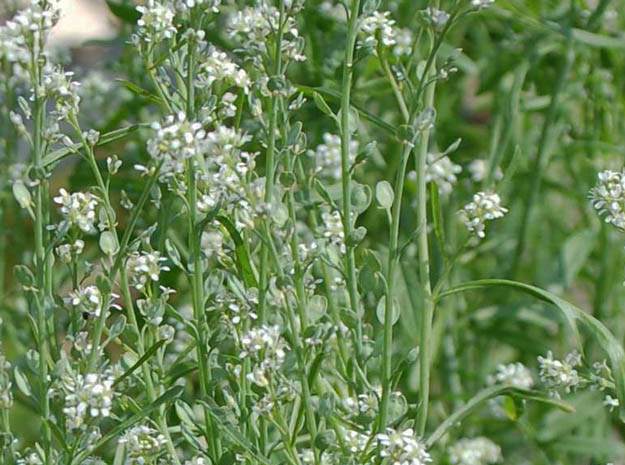
Aasali ആശാളി
Genus: Lepidium
Botanical name: Lepidium sativum
PLANT NAME IN DIFFERENT LANGUAGES
Sanskrit: Chandrasoora, Chandrika, Vasapushpa, Pasumehanakarika
Hindi: Chanasura, Halima
English: Garden Cress, Garden pepper cress, Pepper grass, pepperwort, Poor man’s pepper
Malayalam: Aasali
MEDICINAL PROPERTIES
This annual plant can reach a height of 60 cm (~24 inches), with many branches on the upper part. The white to pinkish flowers are only 2 mm (1/12 of an inch) across, clustered in branched racemes. Edible shoots are typically harvested in one to two weeks after planting, when they are 5–13 cm (2 – 5 inches) tall.
Aasali seeds since ancient times, have been used in local traditional medicine in India. Garden cress seeds are bitter, thermogenic, depurative, rubefacient,galactogogue, tonic, aphrodisiac, ophthalmic, antiscorbutic, antihistaminic and diuretic. They are useful in the treatment of asthma, coughs with expectoration, poultices for sprains, leprosy, skin disease, dysentery, diarrhoea, splenomegaly, dyspepsia, lumbago, leucorrhoea, scurvy and seminal weakness. Seeds have been shown to reduce the symptoms of asthma and improve lung function in asthmatics. The seeds have been reported as possessing a hypoglycaemic property and the seed mucilage is used as a substitute for gum arabic and tragacanth.
Aasali may be given to budgerigars. The seeds are employed as poultice for removing pain, swelling etc. Some use it in the belief that it can cure asthma, bronchitis bleeding piles and Aasali for indigestion and constipation.
